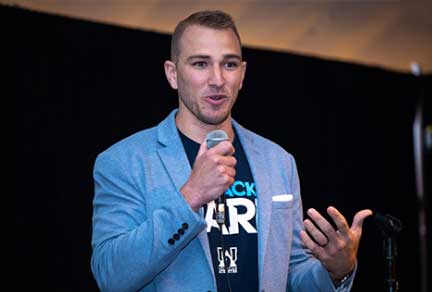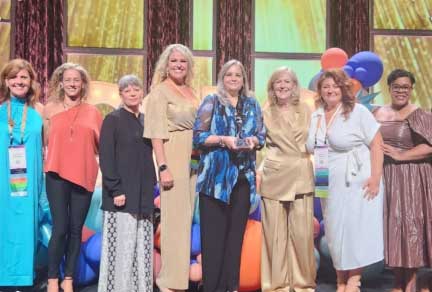Gene therapy: are high costs and manufacturing complexities impeding progress?
This blog is part of The Regulatory Navigator series, where we explore the evolving regulatory landscape with actionable insight from Parexel's experts, sharing their experience to maximize success for clinical development and patient access.
While adeno-associated virus (AAV) has gained prominence as the workhorse for gene therapy products, it is hard to overlook the associated development challenges, such as complexities in manufacturing, that create a bottleneck to the availability of AAV-based therapies to treat both rare and prevalent diseases.
During the American Society of Gene & Cell Therapy (ASGCT) annual meeting in May 2024, Dr. Peter Marks, Director of FDA’s Center for Biologics Evaluation and Research (CBER), emphasized the need for drug developers to improve AAV manufacturing. He noted, “There are companies that have really mastered making AAVs, but even they find it challenging to make this product really well.” Also, in what has turned out to be a somewhat viral (no pun intended) moment, Dr. Marks shared an anecdote highlighting the high costs of gene therapies. Dr. Marks shared that the FDA Commissioner sent him an email that only said “$4.25 million!!!," to convey the Commissioner’s shock at the cost of a recently approved gene therapy product.1 Although cost is not a factor in FDA’s drug approval decisions, Dr. Marks noted that CBER and its Office of Therapeutic Proteins (OTP) intend to collaborate with industry to facilitate an ecosystem for the development of gene therapies that balances the challenges of expedited development of these complex, novel products with reasonable costs.
AAV gene therapies: Cost recovery for overall development is driving pricing
The substantial costs of gene therapies are often attributed primarily to manufacturing costs. However, this is not the case, as illustrated in the following example:
- A typical 200-liter suspension culture batch of an AAV-based drug product, manufactured under current Good Manufacturing Practices (cGMP), costs approximately USD 2 million at a US-based contract development and manufacturing organization (CDMO), in our experience. This cost includes manufacturing and all testing for drug product release.
- Assuming that this 200-liter batch provides only 200 doses (e.g., for high-vector-genome per dose, systemic route-of-administration therapies), the cost per dose is about $10,000. Therefore, if this were to be a one-time treatment with a retail cost of $4.25M per dose, the actual manufacturing cost per dose would only be 0.235% of the final price tag.
- Based on these calculations and assumptions only a tiny portion of the high price tag of AAV-based gene therapies can be attributed directly to manufacturing costs.
The primary driver of the high cost of a gene therapy product stems from the desire to recover the overall development costs required to bring the therapy to the market. These include the high costs incurred for non-clinical and clinical studies. One way for developers of AAV-based gene therapy products to lower development costs in the initial stages is to streamline process analytical development activities. For example, the purification process for AAV comprises two chromatography steps: affinity followed by ion-exchange. Developers can focus on process parameters for these chromatography steps that can be easily applied to different AAV serotypes, rather than reinventing the proverbial wheel for each serotype which leads to longer timelines and higher costs. Another critical approach to aid the curtailment of development costs for AAV therapies is the deployment of new and fine-tuned platform technologies. Last, but not least, extending AAV-based gene therapies to prevalent, high-incidence diseases will help offset cost per dose as well, since a larger number of patients will be treated.
Gene editing products are the new focus of development
The ASGCT meeting’s placement of a spotlight on gene editing (GE) as the great hope for the future of medicine aligns with one of CBER’s initiatives to foster the development of platform technologies.2 Although FDA will expand its plans over time, Dr. Marks mentioned CRISPR-based therapies as a platform example. This is because in such therapies, the nuclease will be the same for treatment of multiple mutations, but the guide RNAs that target specific mutation-containing sequences in genomic DNA will differ. Under the FDA’s historic paradigm, which was recently outlined in guidance,2 each combination of the nuclease plus a set of guide RNAs would be considered a different product, but it will not be feasible to use the one product/one development program paradigm for the myriad of disease-causing mutations. Dr. Marks described a hypothetical case of a company that is targeting an indication that comprises 30 mutations and stated that if the company could provide proof-in-principle that the GE product could effectively treat multiple types of mutations (e.g., a missense mutation, a nonsense mutation, a truncating mutation, etc.), then FDA could potentially label the product as treatment for all 30 mutations - even though the majority of mutations would not have been studied.
Regulatory initiatives to accelerate gene therapy development: Accelerated Approval and the global regulatory authority Working Group
The relationship between gene therapy and high-unmet-need rare diseases continued to be in focus at the ASGCT meeting. Based on the discussions at the meeting, increased use of surrogate endpoints to demonstrate efficacy and the Accelerated Approval pathway is likely to continue for gene therapies targeting rare diseases. It seems that FDA’s evolving paradigm for future approvals of gene therapy products for rare disease favors rapid approval of promising therapies under Accelerated Approval, with confirmatory trials to be completed after approval.
Additionally, there are plans to create a Working Group comprised of representatives from global regulatory authorities, to foster global regulatory convergence for review of marketing applications for gene therapy products that are submitted at the same time in different regions. There are several challenges to regulatory convergence in review of a core dataset for licensure. For example, how would differences in patient demographics in different regions be handled, given the regional variability in the incidence of specific mutations, for which gene therapy products may have different degrees of efficacy? Despite the challenges, this initiative holds merit and the Working Group can draw upon past successes in global regulatory harmonization. This is especially important as the gene therapy field inexorably moves toward tackling more prevalent diseases, because all regulators will need to re-evaluate their current considerations for determining the benefit-risk balance, which currently are more applicable to rare diseases.
In summary
While manufacturing complexities contribute to the challenges faced by gene therapies, the high costs of approved gene therapies for patients primarily stem from the need to recoup substantial development expenses. Development costs can partially be managed through streamlined CMC strategies, as well as extending AAV-based gene therapies to treat prevalent diseases, which can also help to offset the cost per dose. FDA continues to evolve its paradigm for approvals of gene therapy products for rare diseases, favoring Accelerated Approval. There are plans to create a Working Group consisting of global health authorities' representatives to foster regulatory convergence for simultaneous marketing applications in different regions. While there are challenges in regulatory convergence, this is an important initiative to help bring gene therapies to the market sooner.
Parexel’s team of ex-regulators and industry experts are available to further discuss the implications of the current and future regulatory environment to assist gene therapy developers, including the new platform approaches and regulatory convergence. We’re always available for a conversation.
References:
1. Biospace, ASGCT2024: FDA’s Marks on Accelerated Approval, Gene Therapy Costs and More (May 2024). https://www.biospace.com/article/asgct2024-fda-s-marks-on-accelerated-approval-gene-therapy-costs-and-more/
2. Platform Technology Designation Program for Drug Development (May 2024). https://www.fda.gov/regulatory-information/search-fda-guidance-documents/platform-technology-designation-program-drug-development
Related Insights
Blog
EU Biotech Act: Strategic considerations for biotech companies
Dec 22, 2025
Blog
The EU-CTR transition: Four key ways to prepare now
Jan 12, 2024
Webinar
Assessing appropriate use of ECAs in clinical trials
May 28, 2023
Blog
Celebrating 40 Years of Rare Disease Progress: WODC Highlights
Jun 6, 2023
Blog
Population variability: important considerations in vaccine development
Jun 14, 2023
Whitepaper
How to prepare for Policy 0070: Challenges and opportunities for clinical data publication in the EU
Jun 28, 2023
Article
The technologies that are reshaping biotherapeutics manufacturing, an EU perspective
Jul 6, 2023
Blog
Ensuring future success in a new market by delivering a robust safety database solution
Aug 4, 2023
Whitepaper
Optimizing the Route to Regulatory Approval for a Novel Vaccine
Aug 18, 2023
Article
Australia: The Regulatory and Reimbursement Environment
Aug 28, 2023
Whitepaper
Scientific Validity Reports: a mandatory requirement for In Vitro Diagnostic Regulation (IVDR)
Sep 19, 2023
Blog
Assessing the need for comparative clinical trials in biosimilar development programs
Sep 21, 2023
Related Insights
Blog
EU Biotech Act: Strategic considerations for biotech companies
Dec 22, 2025
Blog
The EU-CTR transition: Four key ways to prepare now
Jan 12, 2024
Webinar
Assessing appropriate use of ECAs in clinical trials
May 28, 2023
Blog
Celebrating 40 Years of Rare Disease Progress: WODC Highlights
Jun 6, 2023
Blog
Population variability: important considerations in vaccine development
Jun 14, 2023
Whitepaper
How to prepare for Policy 0070: Challenges and opportunities for clinical data publication in the EU
Jun 28, 2023
Article
The technologies that are reshaping biotherapeutics manufacturing, an EU perspective
Jul 6, 2023
Blog
Ensuring future success in a new market by delivering a robust safety database solution
Aug 4, 2023
Whitepaper
Optimizing the Route to Regulatory Approval for a Novel Vaccine
Aug 18, 2023
Article
Australia: The Regulatory and Reimbursement Environment
Aug 28, 2023
Whitepaper
Scientific Validity Reports: a mandatory requirement for In Vitro Diagnostic Regulation (IVDR)
Sep 19, 2023
Blog
Assessing the need for comparative clinical trials in biosimilar development programs
Sep 21, 2023



